Science Highlights, April 26, 2017
Awards and Recognition
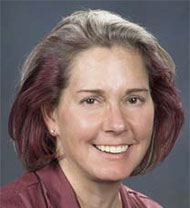

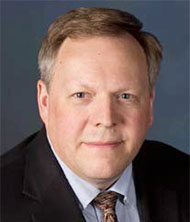

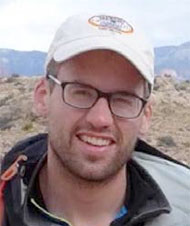
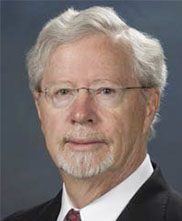
- Jaqueline Kiplinger chosen for the Violet Diller Professional Excellence Award
- Eric Brown and James Foley recognized with TMS awards
- Ning Xu chairs American Chemical Society Central New Mexico Local Section
- Andrew Baker receives Bill N. Baron Fellowship for work in clean energy generation
- Joe Thompson named IOP Reviewer of the Year
Capability Enhancement
Nanoscale chemical microscopy capability installed
Unique characterization capabilities for understanding plutonium aging
Earth and Environmental Sciences
Structures and stability of an uncommon oxidation state of uranium oxides
Materials Physics and Applications
Controlling strain in new functional materials with tunable and enhanced properties
Materials Science and Technology
Accessing 3-D microstructural data on model deformation of polycrystalline materials
Awards and Recognition
Jaqueline Kiplinger chosen for the Violet Diller Professional Excellence Award
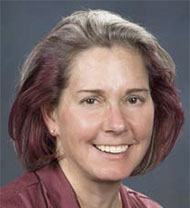
Jaqueline Kiplinger
Iota Sigma Pi (the National Honor Society of Women in Chemistry) has selected Jaqueline Kiplinger (Inorganic, Isotope and Actinide Chemistry, IIAC) to receive the 2017 Violet Diller Professional Excellence Award. The award is given triennially to recognize contributions to chemistry that have had widespread significance to the scientific community or society on a national level. The award honors her scientific achievements, service to the broad chemistry community and mentoring of early career researchers. She will present a summary of her work and receive the award during a ceremony at the July 2017 Iota Sigma Pi national convention.
Kiplinger came to the Laboratory as the first Frederick Reines Postdoctoral Fellow in 1999. She joined LANL as a Technical Staff Member within Chemistry Division in July 2002. Kiplinger has accomplished pioneering work to establish synthetic routes to novel uranium and thorium compounds that have opened up new frontiers in understanding the nature of bonding and reactivity in actinides. In addition to discovering new actinide reactivity patterns and bonding motifs, Kiplinger developed inexpensive, simple and safe techniques to make thorium and uranium halide starting materials, which has been critical to advancing the synthetic and mechanistic chemistry of these important elements and for understanding their behavior in a variety of applications. Kiplinger’s novel synthetic approaches have led to the systematic isolation of entirely new classes of molecular uranium and thorium complexes. In other work, she pioneered the use of copper and gold reagents as one-electron oxidants for actinide compounds and designed a photochemical synthesis that established the first-ever evidence for the formation of a uranium complex that contains a terminal uranium-nitrogen triple bond. Her work provides scientific underpinning that supports the Laboratory’s national security mission, advances the fundamental understanding of actinide chemistry and promotes the development of postdoctoral fellows.
Kiplinger is a Fellow of the American Association for the Advancement of Science, the Royal Society of Chemistry and the American Institute of Chemists. A Los Alamos Fellows Prize for Research, two R&D 100 Awards, three mentoring awards, and several Los Alamos/NNSA Best-in-Class Pollution Prevention Awards recognize her achievements. Kiplinger was selected as the first woman to receive the F. Albert Cotton Award in Synthetic Inorganic Chemistry from the American Chemical Society. She is also the first scientist at the Laboratory to have been honored with two national-level ACS awards, the first being the 1998 Nobel Laureate Signature Award in Chemistry. Earlier this year, she received the 2017 International Union of Pure and Applied Chemistry (IUPAC) Distinguished Women in Chemistry award.
Iota Sigma Pi was founded in 1902 and serves to promote the advancement of women in chemistry by granting recognition to women who have demonstrated superior scholastic achievement and high professional competence by election into Iota Sigma Pi. Technical contact: Jaqueline Kiplinger
Eric Brown and James Foley recognized with TMS awards
The Minerals, Metals & Materials Society (TMS) has presented awards to Eric Brown (Explosive Science and Shock Physics Division, M-DO) and James Foley (Sigma Division, Sigma DO) at the TMS Annual Meeting in San Diego, CA. The TMS is a professional society of nearly 13,000 members on six continents. The organization aims to promote the global science and engineering professions concerned with minerals, metals, and materials. It connects minerals, metals, and materials scientists and engineers who work in industry, academia, and government positions around the world. The organization creates networking, publication, and professional development opportunities, and nurtures the next generation of science and engineering professionals through a strong student membership program in collaboration with three other professional societies.

Eric Brown
Eric Brown named a 2017 Brimacombe Medalist
The TMS cited Brown for “distinguished contributions to advancing the field of material dynamic mechanical properties and damage processes, while providing long-standing service to TMS and the materials community.
The TMS presents the Brimacombe medal as a mid-career award that recognizes individuals with sustained excellence and achievement in business, technology, education, public policy, or science related to materials science and engineering and with a record of continuing service to the profession. The recipient must be a current professional member of TMS, have been a member for at least five consecutive years, and may not reach his/her 50th birthday by December 31 of the year in which the initial nomination is made.
Brown holds a PhD in theoretical and applied mechanics from the University of Illinois at Urbana-Champaign and is a leader in the field of dynamic behavior of materials. He joined the Laboratory as a Director’s Postdoctoral Fellow in 2003. His research has spanned fracture and damage of complex heterogeneous polymers and polymer composites for energetic, reactive, and structural applications including crystalline phase transitions, plasticity, dynamic loading conditions, and self-healing materials.
Brown is a Fellow of the Society for Experimental Mechanics and has received numerous awards for his technical achievements in solid mechanics and materials science from the DOE-NNSA, LANL, the Society for Experimental Mechanics (SEM), The Metals Minerals and Materials Society (TMS), the Materials Research Society (MRS), American Society for Composites (ASC) and the University of Illinois. He is founding Editor-In-Chief for the Journal of Dynamic Behavior of Materials, is an executive board member of TMS, and is on the editorial board for the Journal of Strain Analysis for Engineering Design. He has over 100 publications with 6,300 citations. Technical contact: Eric Brown
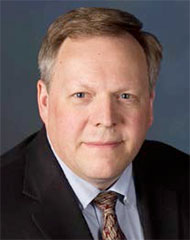
James Foley
James Foley chosen for the Alexander Scott Distinguished Service Award
The TMS cited Foley for “dedicated and sustained service to TMS and its members, particularly to improvements in the quality of programming at TMS annual meetings and at Materials Science and Technology conferences."
The award is named for Alexander R. Scott, who served as executive director of TMS from 1973 until 2008. The annual award recognizes a member’s devotion of time, effort, thought, and action to further TMS’s mission through administrative and functional activities. It is usually presented to an individual for 10 or more years of TMS service in areas ranging from membership development to student chapters, and education and professional affairs.
Foley earned a PhD in metallurgical engineering from the University of Wisconsin at Madison. He began working as a postdoctoral fellow at DOE’s Ames Laboratory in Iowa before coming to Los Alamos in 2003. Foley leads Sigma’s Characterization and Special Projects team, which conducts microstructural analyses of materials not containing plutonium. His research focuses on alloys, beryllium, lead-free soldering, and powder metallurgy. Foley holds a U.S. patent for nanocrystal dispersed amorphous alloys. He was a trustee of AMS International from 2012-2015. He served on the TMS board twice, contributed to several committees, and advanced TMS programming. Technical contact: James Foley
Ning Xu chairs American Chemical Society Central New Mexico Local Section
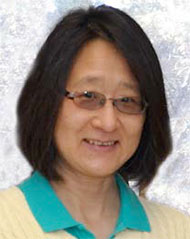
Ning Xu
The American Chemical Society Central New Mexico Local Section has elected Ning Xu (Actinide Analytical Chemistry, C-AAC) to be Chair-Elect for 2017 and Chair for 2018.
Xu holds a Ph.D. in chemistry from the University of Kentucky. She joined the Laboratory in 2006 after working for the EPA National Risk Management Research Laboratory. Xu is an expert on analysis of trace elements in plutonium and uranium for nuclear forensics and material certification, and has received numerous awards for technical innovations that have reduced the environmental, safety and health impact of actinide analytical chemistry. She has received a NNSA Best-in-Class, Sustainability Champion Pollution Prevention Award for her work.
ACS Local Sections are geographic chapters that enable members to connect with other chemists and chemical engineers in the region, affect change in communities through outreach to schools, and contribute to public understanding of chemistry through community events. The Central New Mexico Section covers a 10-county region of Central and Northern New Mexico and serves ACS members who work or study at major institutions including the University of New Mexico, Sandia and Los Alamos National Laboratories, New Mexico Institute of Mining and Technology, New Mexico Highlands University, and the State of New Mexico.
With nearly 157,000 members, the American Chemical Society is the world’s largest scientific society and one of the world’s leading sources of authoritative scientific information. A nonprofit organization chartered by Congress, ACS is at the forefront of the evolving worldwide chemistry enterprise and the premier professional home for chemists, chemical engineers and related professions around the globe. Technical contact: Ning Xu
Andrew Baker receives Bill N. Baron Fellowship for work in clean energy generation
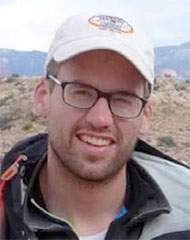
Andrew Baker
Graduate Research Assistant Andrew Baker (Materials Synthesis and Integrated Devices, MPA-11) received a Bill N. Baron Fellowship from the University of Delaware for his research in clean energy generation. Recipients must perform exceptional supervised research in engineering, science, or energy policy in the renewable energy field.
Baker works with Rod Borup (MPA-11) as part of the Fuel Cell Consortium for Performance and Durability (FC-PAD) project, a DOE-funded consortium led by Los Alamos. The project’s goal is to demonstrate world-class improvements in fuel cell performance and durability that exceed the DOE’s targets for 2020. Baker’s role in FC-PAD involves understanding mechanisms of cerium (Ce) radical scavenger migration in order to enhance fuel cell durability and mitigate performance losses. The Baron Fellowship recognizes this work along with research performed at University of Delaware that involved using carbon nanotubes to improve the mechanical properties of polymer electrolyte membranes.
Baker is a PhD candidate in mechanical engineering at the University of Delaware. He joined the Laboratory in 2014 to continue his dissertation studies on polymer electrolyte membrane (PEM) fuel cell durability. During the 2015 Fuel Cell Seminar and Energy Exposition in Los Angeles, he won a Best Poster Award for his research into cerium migration during PEM fuel cell operation and a second-place Bernard Baker Student Award for fuel cell research.
The fellowship, named for Bill N. Baron, who served the University of Delaware and the photovoltaic community from 1975 to 1992 in scientific and leadership roles at the Institute of Energy Conversion, is typically granted to two students annually in recognition of their clean energy R&D contributions at the University of Delaware. Technical contact: Andrew Baker
Joe Thompson named IOP Reviewer of the Year
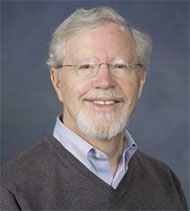
Joe Thompson
IOP Publishing selected Joe Thompson (Condensed Matter and Magnet Science, MPA-CMMS) for a 2016 Reviewer of the Year Award in recognition of his work assessing manuscripts for publication in Reports on Progress in Physics. The publisher’s selection is based on review quality, quantity, and timeliness for each of its affiliated journals.
Thompson is a fellow of the American Association for the Advancement of Science, American Physical Society, and Los Alamos National Laboratory. He received the 2014 Frank H. Spedding Award for outstanding contributions to the physics of f-element materials. Thompson is a member of the Institute for Scientific Information’s inaugural group of the 250 most frequently cited physicists in the world and from 2012-2013 held the honorary title of Distinguished Visiting Chair Professor of Physics at Sungkyunkwan University, South Korea.
He is the capability leader of MPA-CMMS’s Novel Materials at Extreme Conditions team, whose members pursue the discovery and understanding of new phenomena and new quantum states in strongly correlated electron materials through measurements at high pressures, magnetic fields, and low temperatures. His research in condensed-matter physics has spanned problems posed by a spectrum of materials and is motivated primarily by interest in discovering and understanding exotic states produced by strong electronic correlations and the response of these states to high pressures.
IOP Publishing, a subsidiary of the Institute of Physics, works to promote physics and bring physicists together for the benefit of all. It has a worldwide membership of about 50,000 physicists and maintains journals, e-books, magazines, conference proceedings, and websites for the scientific community. This is the first year IOP has published its list of top reviewers from the previous year. Technical contact: Joe Thompson
Bioscience
Accessible model supports public health decision-making for disease control
Infectious diseases remain one of the leading causes of both morbidity and mortality. Decisions surrounding how to control an infectious disease outbreak currently rely on a slow, subjective process involving surveillance and expert opinion. However, there are many situations where neither may be available. Modeling can fill gaps in the decision-making process in a timely manner by using available data to provide quantitative estimates of outbreak trajectories and
the effects of possible control measures. A Laboratory team conducted a computer modeling study aimed at making epidemiological models more accessible and useful for public-health collaborators in order to improve disease-related decision-making. In research published in Scientific Reports, a Nature journal, an interdisciplinary group of Los Alamos researchers used existing epidemiological models with low computational requirements: 1) to explore disease-control measures and 2) to develop a platform for public-health collaborators to use and provide feedback on models.
The team began with a standard compartmental Susceptible-Infected-Recovered (SIR) model, which divides individuals into categories based on their disease status. The number of
people in each compartment varies with time as the outbreak progresses, but the overall population in the model stays constant. Susceptibles (S) are those that are at risk of infection. Infected (I) are individuals experiencing the illness, and recovered persons (R) have completed infection and are now immune to the disease, or died as a result of the infection. Movement between compartments is described by a system of equations. The researchers modified the model to include a control measure to examine many possible disease progression paths. This included exploration of measles, norovirus, and influenza outbreaks. The investigators applied existing SIR models to investigate control options using a counterfactual approach (isolates one variable), a web application using the model, and a description of a path forward for validating SIR models.
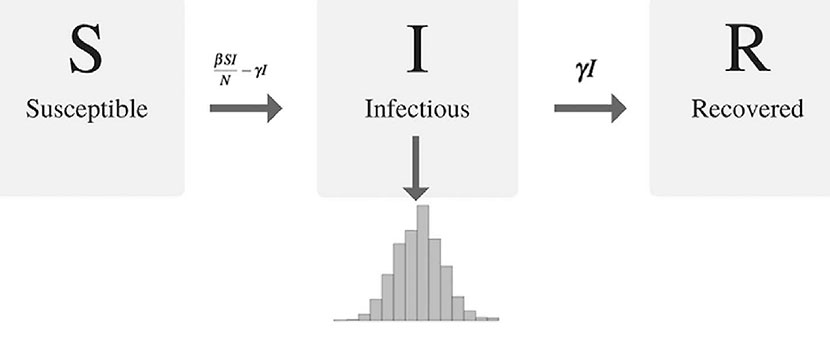
Figure 1. Susceptible – Infectious – Recovered (SIR) model. Individuals move between three compartments—S (susceptible), I (infectious) and R (recovered). Movement between the categories is dependent on β and γ, which describe the “force” of the infection (how quickly an infection moves through a population) and the infectious period, respectively. The number of infectious persons at any given time results in the epidemic curve familiar to many epidemiologists.
This model revealed that the length of the infectious period is the factor that affects the outcomes most substantially. When the infectious period is short, as in norovirus, individuals progress from infected to recovered too quickly to pass the illness to others. Due to the longer infectious period of measles, the simulations indicate that many measles outbreaks are essentially unaffected by any control measure test. However, the model revealed that implementing a control measure early is more important than implementing the most effective control measure.
The work demonstrated the feasibility of the model’s use and ability to evaluate potential control measures. Standard epidemiological models are disease- and location-specific and not transferrable or generalizable. However, this new model is disease- and location- agnostic and can be used at a much higher level for planning purposes regardless of the specific control measure. By investigating plausible disease parameter ranges, rather than point estimates, the researchers could analyze a number of possible outbreaks and gain a quantitative understanding of how disease parameters affect outbreak outcomes. The new model provides a mechanism for iteration and feedback between public health decision-makers and the modeling community
The team concluded that there is a clear need to better understand outbreak parameters, underlying model assumptions, and the ways that these apply to real-world scenarios. The authors propose thoughtful validation of SIR models as an important next step. Such a validation would accomplish several things. It would: 1) validate the counterfactual approach, 2) provide additional data to describe when compartmental models are appropriate approximations of real world outbreaks, and 3) provide data to describe situations where the compartmental models do not match real world outbreaks and should not be used for decision support.
Reference: “An Approach to and Web-based Tool for Infectious Disease Outbreak Intervention Analysis,” Scientific Reports 7, 46076 (2017); doi: 10.1038/srep46076. Authors: Ashlynn R. Daughton and Nicholas Generous (Information Systems and Modeling, A-1), Reid Priedhorsky (High Performance Computing Environments, HPC-ENV), and Alina Deshpande (Biosecurity and Public Health, B-10).
The Defense Threat Reduction Agency (DTRA) Joint Science and Technology Office funded the work, which supports the Laboratory’s Global Security mission area and the Science of Signatures science pillar through prediction of the spread of disease and evaluation of measures that could control biological threats. Technical contact: Alina DeshpandeCapability Enhancement
Nanoscale chemical microscopy capability installed
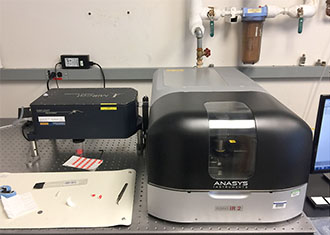
Photo. Anasys Instruments AFM-IR2-s Infrared Atomic Force Microscopy system.
Physical Chemistry and Applied Spectroscopy (C-PCS) installed an Anasys Instruments nanoIR2-s Atomic Force Microscopy/Infrared Spectroscopy system (AFM-IR) in the Chemical Microscopy Center. The AFM research community has developed distinct imaging techniques that provide extremely high-resolution material contrast, based on friction, thermal dissipation, electrical conductivity, or sample stiffness. Although these techniques are each useful for their specific application, none of them provides unambiguous chemical and/or material identification. AFM-IR is the first technique that provides chemical characterization for large classes of samples and can enable the analysis of chemical contrast in the nm spatial regime.
AFM-IR illuminates a sample with pulses of infrared radiation and uses the oscillating tip of an AFM to detect the absorbed radiation. Monochromatic, tunable IR light absorbed by the sample is converted to heat and causes a rapid thermal expansion under the AFM tip. This sample change alters the resonant oscillation of the AFM cantilever. The amplitude of the cantilever oscillation is proportional to the sample absorption coefficient at the specific wavelength. AFM-IR absorption spectra are created by measuring the cantilever oscillation amplitude as a function of the wavelength of the incident radiation. The resulting spectrum has the same peak centers, widths, and relative intensities as far field infrared absorption. This enables comparison of the spectra with traditional spectral libraries. A variety of imaging modalities are available, including traditional AFM, point nm-scale sampling infrared spectra, AFM-IR imaging using contrast at different frequencies, and full AFM-IR hyperspectral imaging. In addition, there is a feature which enables thermal melt analysis or Transition Temperature Microscopy mapping through custom tips.
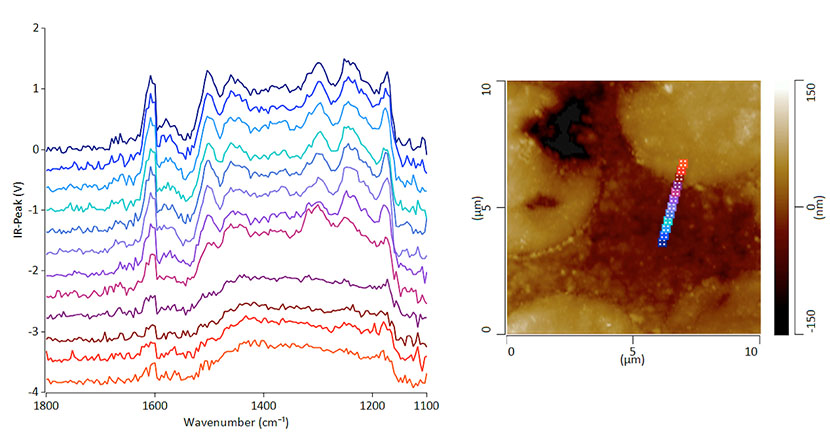
Figure 2. Representative hyperspectral AFM-IR map. (Right): AFM image of carbon fiber-epoxy composite. (Left): Spectral analysis showing chemical variation at interphase region of locations.
Fourier Transform Infrared (FTIR) spectrometers are ubiquitous in chemistry laboratories and are used for chemical analysis of samples, where specific “molecular fingerprint” spectral regions can frequently be used to identify unknown species. A more advanced but related system is a FTIR microscope, which enables chemical contrast imaging of complex samples. However, the spatial resolution of these instruments is in the 5-10 µm range. The AFM-IR system can perform many of the same types of analyses as an FTIR microscope. However the new system can improve the spatial resolution to less than 100 nm. Depending on the sample, the thickness can be important, and AFM-IR spatial resolutions can substantially beat less than 100 nm. A four chip Quantum Cascade laser provides spectral tunability in the 900-2000 cm-1 range, which is most diagnostic for a large number of samples. If lower frequency modes are needed, the Chemical Microscopy Center also provides a complementary technique, AFM-Raman system, which is appropriate for those types of measurements.
The Science, Technology, and Engineering (PADSTE) Directorate’s Small-scale Equipment Program funded the system, which supports the Laboratory’s Science of Signatures and the Materials for the Future science pillars. Technical contacts: Kirk Rector and Brad Yoakam
Unique characterization capabilities for understanding plutonium aging
Nuclear Materials Science (MST-16) plays a critical role in evaluating the static and dynamic properties of new and aged plutonium. The group’s work, in collaboration with Shock and Detonation Physics (M-9), Materials Science in Radiation and Dynamics Extremes (MST-8), Condensed Matter and Magnet Science (MPA-CMMS), and Weapon Component Manufacturing and Surveillance (NCO-1), provides an integrated effort to support the B61 Life Extension Program through the National Nuclear Security Administration’s Science Program.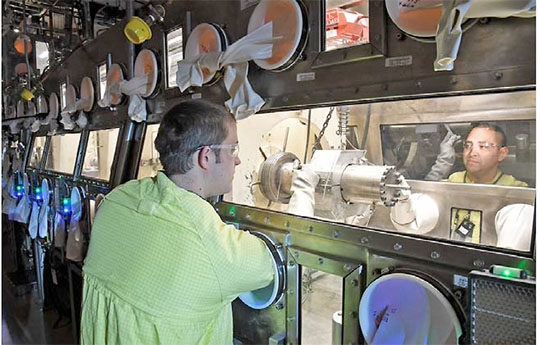
Photo. MST-16 research technicians Ben Hollowell (left) and Todd Martinez (right) work on the PF-4 40-mm gun. The 40-mm gun is a key research tool for understanding the dynamic properties of plutonium.
This effort began several years ago with casting simulation and mold development, plutonium casting, and thermal processing, machining, and small-sample preparation. Researchers used metallography and electron microprobe analysis to perform microstructural characterization of new cast material and aged plutonium samples. The immersion method and a new gas pycnometry capability determined individual sample density. Resonant ultrasound spectroscopy evaluated elastic constants and sample quality. Once the team had measured the characteristics of individual samples, they evaluated mechanical and dynamic properties using variable temperature resonant ultrasound spectroscopy, quasi-static compression testing, Kolsky bar testing, and 40-mm gas and powder shots. The investigators prepared, assembled, and shipped several samples to the Z Facility at Sandia National Laboratories for very high-strain rate testing. This combination of plutonium structure, properties, and performance research capability is unique in the DOE complex.
NNSA funded the work, which supports the Lab’s Nuclear Deterrence mission area and the Science of Signatures and Materials for the Future science pillars. Technical contact: Jeremy Mitchell.
Chemistry
Novel homogeneous catalyst challenges a long-standing paradigm
Catalytic hydrogenations represent the largest volume human-made chemical reactions in the world. Many important processes are based on a homogeneous version of this reaction. Industrially used molecular metal/NH bifunctional Noyori-type catalysts are among the most efficient artificial catalysts developed to date for the hydrogenation of carbonyl functionalities (loadings up to approximately 10–5 mol %). These catalysts also exhibit up to 99.9% C═O/C═C chemo- and enantioselectivities Ryoji Noyori received the Nobel Prize in Chemistry for the discovery of the catalyst.
Developing more efficient catalysts requires understanding how these catalysts work. For over 15 years, the unique set of properties with Noyori-type catalysts was traditionally associated with the operation of an unconventional mechanism (Noyori mechanism) for homogeneous catalysts in which the chelating ligand plays a key role in facilitating the catalytic reaction and enabling the selectivities by delivering/accepting a proton (H+) via its N–H bond cleavage/formation.
Pavel Dub and John Gordon (Inorganic, Isotope, and Actinide Chemistry, C-IIAC) previously suggested a revised mechanism of the Noyori hydrogenation reaction. In this mechanism, the nitrogen-hydrogen (N–H) bond is not cleaved. Instead, the bond serves to stabilize the turnover-determining transition states via strong N–H···O hydrogen-bonding interactions. These scientists published new work demonstrating that decreasing the strength of the hydrogen-bonding interaction, ultimately to the limit of its complete absence, are conditions under which the same alkylation may lead to beneficial catalytic activity. In a publication in Journal of the American Chemical Society, Dub and Gordon describe the first molecular catalyst in which alkylation of the N–H functionality leads to improved activity.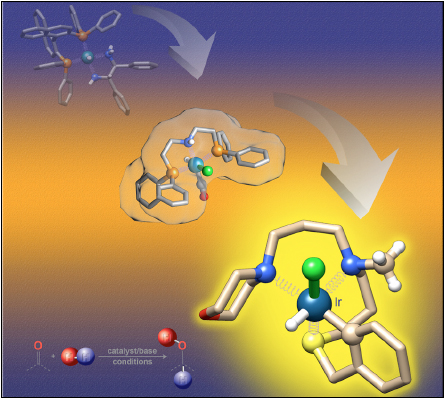
Figure 3. Evolution of efficient homogeneous catalysts for C=O group reduction. (Top): Noyori catalyst, (middle): Takasago’s Ru-Macho catalyst, (bottom): a catalyst recently developed at the Laboratory. The Noyori catalyst is one of the most important industrial catalysts developed to date for the hydrogenation of ketones, aldehydes, and imines. The Ru-MACHO catalyst is another efficient and important hydrogenation catalyst. Figure credit: Josh Smith, Chemistry Division
Reference: “Why Does Alkylation of the N−H Functionality within M/NH Bifunctional Noyori-Type Catalysts Lead to Turnover?” Journal of the American Chemical Society 139, 1245 (2017) doi: 10.1021/jacs.6b11666. Authors: Pavel A. Dub and John C. Gordon (C-IIAC), and Brian L. Scott (Materials Synthesis and Integrated Devices, MPA-11).
A Laboratory J. Robert Oppenheimer (JRO) Distinguished Postdoctoral Fellowship sponsored Pavel Dub, and the Laboratory Directed Research and Development (LDRD) program funded John Gordon and Brian Scott. The work supports the Lab’s Energy Security mission area and the Materials for the Future science pillar via the development of more efficient catalysts for commercially relevant reactions. Technical contacts: Pavel Dub and John GordonEarth and Environmental Sciences
Structures and stability of an uncommon oxidation state of uranium oxides
Because uranium (U) is the primary constituent of spent nuclear fuels and it poses a serious risk to the environment, tremendous efforts have been made to develop approaches for its remediation. Uranium exists in multiple valences, including U(IV), U(V) and U(VI). U(IV) occurs as a UO2 solid, a major nuclear fuel, while U(VI) tends to form the uranyl ion, (UO2)2+, which is highly soluble (and thus mobile) in aqueous media such as groundwater. Hence, converting the mobile (UO2)2+ into U(IV) that is much less soluble has been a primary strategy for U remediation. By contrast, U(V) is less well known. Although U(V) can exist in an aqueous solution, its presence in the solid state is relatively uncommon. However, as U(V) is the intermediate oxidation state between U(IV) and U(VI), understanding the U(V) behavior may be crucial for developing effective strategies for uranium remediation and waste disposal as well as for applications in nuclear technology. Elucidation of the structures and stability of U(V)-containing compounds is also of fundamental relevance to actinide redox chemistry. Los Alamos researchers are part of a multi-institutional team that is conducting experimental and modeling studies on two U(V)-containing oxide systems. Dalton Transactions published their findings.
One of the U(V) systems includes metal monouranates of chromium (CrUO4) and iron (FeUO4). To determine their structural characteristics and thermodynamic properties, the team employed a variety of advanced spectroscopic techniques, including synchrotron x-ray absorption spectroscopy, x-ray photoelectron spectroscopy and 57Fe-Mössbauer spectroscopy, combined with calorimetric measurements and density function theory (DFT) calculations of electronic structures. The spectroscopy and DFT calculations confirmed the presence of U(V) in CrUO4 and FeUO4. Enthalpy measurements indicate they are thermodynamically stable. DFT also supports this finding. The team also studied a second oxide system: UTa3O10, a new compound formed by heating a stoichiometric mixture of uranyl(VI) nitrate and tantalum(V) oxide at 1400 °C. The compound possesses a framework structure containing six membered rings of corner-sharing [TaO6]7− octahedra, whose centers are occupied by the uranyl cations [UO2]+. X-ray photoelectron and absorption spectroscopies confirmed the pentavalence of uranium and tantalum. The authors suggest that closely balanced structural stabilizing and destabilizing factors are responsible for the close-to-zero enthalpy of formation of UTa3O10. These results imply that U(V)-bearing phases may participate in uranium transport and/or precipitation in oxidizing aqueous environments.

Figure 4. Crystal structures of the CrUO4, FeUO4 and UTa3O10. Synchrotron x-ray absorption and photoelectron spectroscopy confirmed the pentavalence of uranium, and high-temperature oxide-melt drop-solution calorimetry determined their stability relations (compared with the U(VI)-bearing phases).
References:
“Structure and Thermodynamic Stability of UTa3O10, a U(V)-bearing Compound”, Dalton Transactions 45, 18892 (2016), doi: 10.1039/c6dt02843h. Authors: X. Guo and H. Xu (EES-14), C. Lipp and P. Burns (University of Notre Dame), E. Tiferet (Nuclear Research Center, Israel), A. Lanzirotti, M. Newville, and S. R. Sutton (University of Chicago); M. H. Engelhard and E. S. Ilton (Pacific Northwest National Laboratory); D. Wu (Washington State University), and A. Navrotsky (University of California – Davis).
The Materials Science of Actinides, an Energy Frontier Research Center funded by the U.S. Department of Energy, Office of Science, Office of Basic Energy Sciences primarily supported the project. Guo received a Seaborg postdoctoral fellowship from the Laboratory Directed Research and Development (LDRD) program, through the G. T. Seaborg Institute. The research supports the Lab’s Energy Security mission area and the Materials for the Future science pillar through investigation of uranium redox chemistry and applications to the nuclear industry and radioactive waste disposal. Technical contacts: Xiaofeng Guo and Hongwu Xu
Materials Physics and Applications
Controlling strain in new functional materials with tunable and enhanced properties
Designing novel materials with multifunctional properties for potential applications is a long-term goal in materials science. Strain is a novel approach to manipulating functionalities in correlated complex oxides. Significant epitaxial strain has only been achieved in ultrathin layers, which limits their potential applications. A team of Laboratory researchers and users of the Center for Integrated Nanotechnologies (CINT) tuned lattice strain, microstructure, and defect and interface coupling to develop a new approach to produce nanocomposite films with controlled functionality. The journal Science Advances reported the results.
Epitaxial strain is only effective in a conventional strain engineering framework below the critical thickness, which is usually less than a few tens of nanometers. Tuning electron transport by epitaxial strain has only been achieved in ultrathin layers due to the relaxation of epitaxial strains in relatively thick films. Therefore, the challenges of tuning the magnetic and electron transport properties by strain in thick films is challenging and limits their potential applications.
Vertical nanocomposites with two integrated functional components could exhibit multifunctionalities that do not exist in the single components. The team designed a framework-design-synthesis approach in a vertical lattice strain method. The approach creates a large vertical lattice strain in the matrix by selecting two phases with a large lattice mismatch and a large elastic modulus mismatch. Different from substrate-induced strain, which only exists within a critical thickness (usually very thin), film thickness does not limit the vertical strain induced by the vertical interface. Phase-field simulations predicted strain distribution in thick nanoscaffolding films and determined that the vertical interfacial area and interfacial dislocation density between the scaffold network and film matrix would control the ultimate strain status.
The team’s experimental results confirmed theoretical conclusions and proved that the vertical strain plays a critical role in manipulating magnetism, magnetic anisotropy, and low-field magnetotransport in thick nanoscaffolding films. The researchers showed that the direct lattice matching framework approach could achieve large and uniform vertical strain up to 2%. This increase could significantly modify the magnetic anisotropy, magnetism, and magnetotransport properties in heteroepitaxial nanoscaffold films that are more than a few hundred nanometers in thickness. This is the first demonstration of significantly enhanced low field magnetoresistance in very thick epitaxial manganite nanocomposite films. The novel approach provides a new route to design functional materials for high density data storage and beyond.
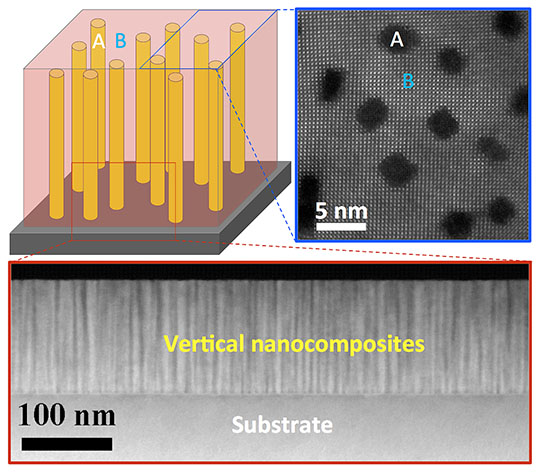
Figure 5. The high resolution scanning transmission electron microscope image, shows a top view of a nanocomposite thin film with magnesium oxide nanowires (approximately 4 nm in diameter, dark contrast) embedded in a perovskite oxide thin film matrix (white contrast).
The research uncovers the interplays among vertical interfaces, strain and functionality, which could allow the design of a variety of functional nanocomposites with enhanced/new properties.
The research findings provide guidance to design large strain in nanoscaffolding films and to use large vertical strain to tune functional properties beyond magnetism and magnetotransport. The insight could lead to new opportunities in fundamental discoveries in physics, chemistry, and materials science. Incorporating these high-density nanowires in thin films could be generalized for a variety of material systems to achieve tunable multifunctional properties for potentially useful applications.
Reference: “Role of Scaffold Network in Controlling Strain and Functionalities of Nanocomposite Films,” Science Advances 2, e1600245 (2016); doi: 10.1126/sciadv.1600245.
Researchers: Aiping Chen, Dmitry Yarotski, Quanxi Jia, Erik Enriquez, and Marcus Weigand (Center for Integrated Nanotechnologies, MPA-CINT); Jia-Mian Hu, Tiannan Yang, and Long-Qing Chen (Pennsylvania State University); Ping Lu (Sandia National Laboratories); Wenrui Zhang, Leigang Li, Qing Su, and Haiyan Wang (Texas A&M University); Jian-Xin Zhu and Towfiq Ahmed (Physics of Condensed Matter and Complex Systems, T-4); and Judith L. MacManus-Driscoll (University of Cambridge).
Materials Science and Technology
Accessing 3-D microstructural data on model deformation of polycrystalline materials
Novel nondestructive characterization techniques for microstructure characterization performed at light sources, such as high-energy x-ray diffraction microscopy (HEDM) conducted in the Advanced Photon Source at Argonne National Laboratory, provide previously inaccessible three-dimensional (3-D) mesoscopic voxelized information on the deformation of polycrystalline materials. (A volumetric pixel (voxel) is the 3-D equivalent of a pixel and the tiniest distinguishable element of a 3-D object.) A major difficulty for interpreting these experiments through micromechanical modeling is the likelihood that processing and/or mounting the sample introduces residual stresses in the specimen. These stresses need to be incorporated into crystal plasticity formulations to enable these models to operate directly from microstructural images and be predictive. The initial micromechanical state of each voxel needs to be specified to achieve this.
In research published in Scripta Materialia, Reeju Pokharel and Ricardo Lebensohn (Materials Science in Radiation and Dynamics Extremes, MST-8) present a method for incorporating grain-averaged residual stresses for instantiation of crystal plasticity simulations. Their method uses the Laboratory-developed fast Fourier transform (FFT)-based elasto-viscoplastic model with an initial eigenstrain term to reproduce the measured residual stresses in the material, for use of HEDM input to predict micromechanical response of polycrystalline samples. (Eigenstrain can be also be called “stress-free” strain, i.e. the strain that a single-crystal grain in a polycrystal would have if it would not be constrained by the rest of the grains in the aggregate.) The methodology is general, easily extendable, and applicable to instantiate other popular full-field models, such as crystal plasticity finite elements, from HEDM experimental data.
The key element of the method was calibrating a set of eigenstrains in the grains of the measured polycrystalline sample to reproduce the measured residual stresses after equilibration. The resulting workflow, illustrated in the figure and based on a refinement of the so-called Eshelby’s approximation, required performing several operations on orientation fields and grain-averaged stress data obtained by HEDM. (Eshelby’s solution of the problem of an inclusion embedded in a matrix, relating the inclusion’s eigenstrain and its resulting final (elastic) strain due to the constraint imposed by the surrounding matrix, is one of the fundamental theorems of micro-micromechanics.) This sequence can be automated for rapid and convenient instantiation of crystal plasticity simulations directly from data collected at light sources.
Figure 6. Schematic of proposed refinement of Eshelby's approximation. Continuous 3-D plots (#1, #3 and #9) represent field data, while discrete sphere plots (#5, #7 and #11) represent grain averaged data (sphere centers = center of mass of grains, color = constant average value of corresponding fields in the grain).
The incorporation in the modeling of Eshelby’s approximation and its further refinement allowed the researchers to reproduce (i.e. “instantiate”) with good accuracy the residual stresses measured by HEDM, and therefore run simulations starting from the actual initial state of the material. Such accurate instantiation is critical to obtain model predictions that compare well with subsequent in-situ HEDM measurements. This work illustrates the Laboratory’s progress in developing new techniques to probe and model materials at the mesoscale, a length-scale lying between atomic structures and the continuum level, which is critical to control material’s performance. Future light sources such as MaRIE, the Laboratory’s proposed x-ray free-electron laser facility for time-dependent materials studies at the mesoscale, would enable in situ 3-D characterization as materials are processed and/or dynamically deformed, and the use of such data to inform and refine predictive models.
Reference: R. Pokharel and R.A. Lebensohn. “Instantiation of Crystal Plasticity Simulations for Micromechanical Modeling with Direct Input from Microstructural Data Collected at Light Sources,” Scripta Materialia 132, 73 (2017); doi: 10.1016/j.scriptamat.2017.01.025.
The Laboratory Directed Research and Development (LDRD) funded the work, which supports the Lab’s Energy Security mission area and its Materials for the Future science pillar through the creation of materials with controlled functionality, a central vision of the Laboratory’s materials strategy. Technical contact: Ricardo Lebensohn
Physics
Dual axis neutron imaging diagnostics deployed at the National Ignition Facility
Los Alamos and Lawrence Livermore national laboratory researchers completed construction of the new neutron imaging system (NIS-NP) for the National Ignition Facility (NIF). This new polar line of sight enables measurement of the neutrons emitted by fuel assembly at stagnation from two orthogonal directions. The team recorded the first data using this system in December.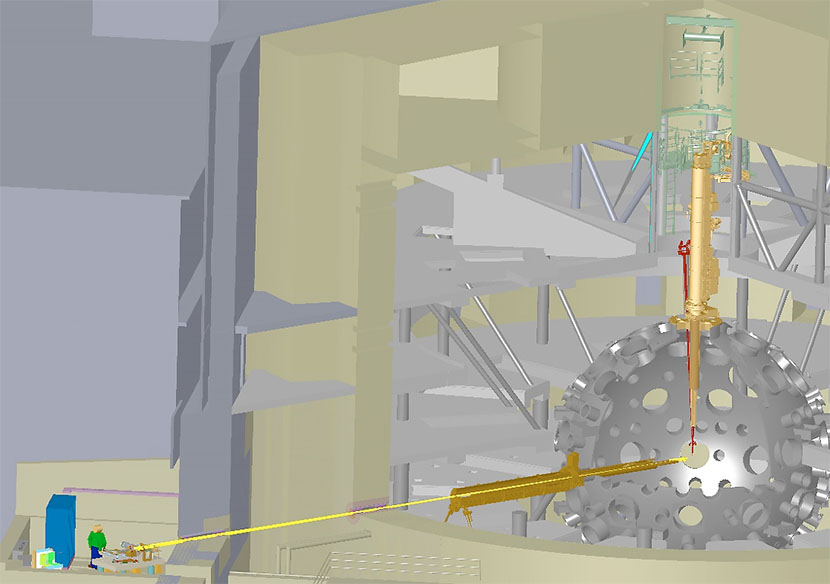
Figure 7. The CAD model of neutron imaging system deployed at the National Ignition Facility.
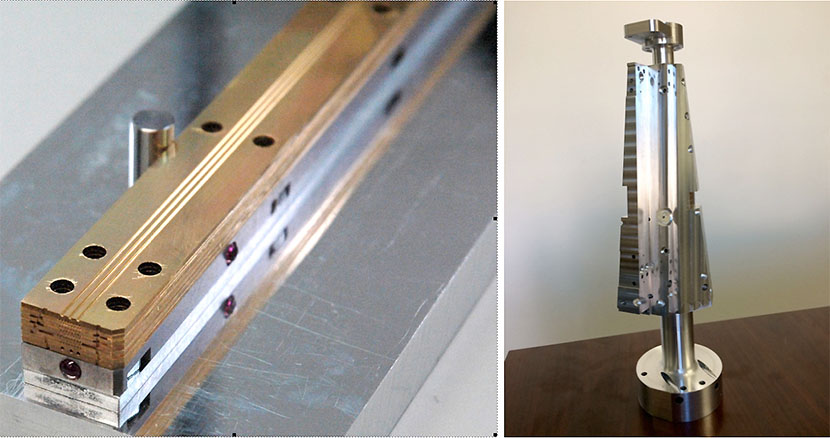
Photos. The major components of the polar NIS system: the new multi-aperture pinhole array (left) and the “snout” (right).
The objective of the neutron imaging system deployed by LANL at NIF is to fully characterize the three-dimensional (3-D) fuel assembly at stagnation by neutron (primary and scattered), x-ray, and gamma-ray images. Typical neutron emission measurements at NIF show a clear asymmetric hotspot and cold fuel. The source of this asymmetry is not fully understood and is possibly an indication of the processes that dominate the stagnation phase of these high convergence implosions, the most critical time in implosion performance. The collection of images obtained from several directions, i.e. multi-dimensional data, would enable the study of the effects of 3-D asymmetries on the stagnation phase physics. The addition of the new line-of-sight is an important first step providing a measurement of 3-D asymmetry to observe correlations between 3-D structure and performance as well as guiding the development and validation of models and simulations. Figure 8 shows the results of the first 3-D reconstruction of the primary neutron from equatorial (90-315) and polar (5.25-225) lines of sight (LOS) data using the spherical harmonics decomposition technique.
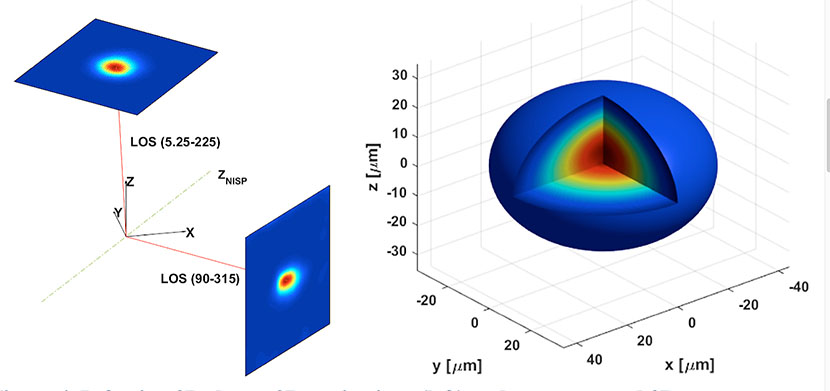
Figure 8. Inferring 3-D shape: 2-D projections (left) and reconstructed 3-D neutron source (right).
Researchers include Petr Volegov, Christopher Danly, Verena Geppert-Kleinrath, Frank Merrill, Raspberry Simpson, and Carl Wilde (Neutron Science and Technology, P-23); Valerie Fatherley and John Oertel (Plasma Physics, P-24); Derek Schmidt, Lynn Goodwin, and John Martinez (Engineered Materials, MST-7); Justin Jorgenson (Applied Engineering Technology, AET-5); Doug Wilson (Plasma Theory and Applications, XCP-6); Steve Batha (Physics, P-DO); Jay Ayers, David Fittinghoff, Gary Grim, Dan Casey, and Charles Yeamans (Lawrence Livermore National Laboratory).
NNSA Campaign 10 (Inertial Confinement Fusion, Steve Batha, LANL program manager) funded the work, which supports the Laboratory’s Nuclear Deterrence mission area and the Nuclear and Particle Futures science pillar. Technical contact: Petr Volegov
Theoretical
Topological quantum electrodynamics explored in the graphene family
Figure 9. Casimir force phase transitions in the graphene family. (Top): Fabry-Pérot cavity formed by two layers of the graphene family under an applied static electric field and circularly polarized light. (Bottom): Casimir energy phase diagram featuring topological phase transitions.
Topology is a branch of mathematics that studies the properties of space that are preserved under continuous deformations, such as stretching and bending. Different topologies can be mathematically characterized by integers called topological invariants. Topologically equivalent objects, such as a torus and a coffee cup, share the same invariant: the number of holes within a closed surface. Only when a hole is created or removed in an object does the topological invariant change – a process known as a topological phase transition. Topological phase transitions in quantum electrodynamics are the photonic counterpart of electronic phase transitions in solid-state physics. By bringing together aspects of topology to quantum fluctuations one can envision new functionalities, such as the development of directed contactless force transmission in nano machines.
Reference: “Casimir Force Phase Transitions in the Graphene Family,” Nature Communications 8, 14699 (2017); doi: 10.1038/ncomms14699. Authors: Pablo Rodriguez-Lopez and Lilia M. Woods (University of South Florida), Wilton J. M. Kort-Kamp (Center for Nonlinear Studies, CNLS and Physics of Condensed Matter and Complex Systems, T-4), and Diego A. R. Dalvit (T-4).
The Laboratory Directed Research and Development (LDRD) funded the work, which supports the Lab’s Energy Security mission area and the Materials for the Future science pillar. The work impacts several phenomena relevant to quantum science, nanotechnology, and nanophotonics; and the LANL Materials Strategy on emergent phenomena at interfaces, because it addresses quantum photonic processes that arise at interfaces of novel topological quantum matter. Technical contacts: D. A. R. Dalvit and W. J. M. Kort-Kamp





